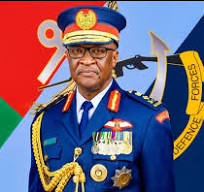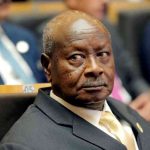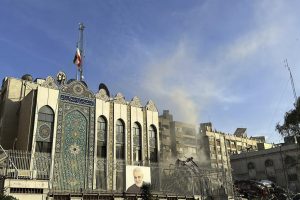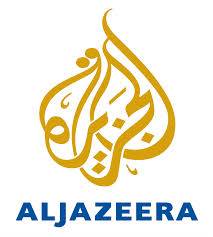Ever since Iran’s mullahs rose to power in 1979 and established an “Islamic Republic”, they have worked to consolidate power both at home and abroad. Given Iran’s growing belligerence toward its neighbors, persistent crackdowns on domestic dissidents, and frightening nuclear ambitions, foreign analysts often talk about the possibility of regime change in Tehran. But there is very little understanding of the obstacles to dethroning the mullahs — namely, that the entire power structure and most of civil society is centralized under the personal control of the Supreme Leader. In this way, Iran’s dictatorship is every bit as entrenched as North Korea’s, making the idea of traditional regime change a pipe dream.
The mullahs created a regime — an entrenched revolution — specifically designed to resist change or reform, adopting a unique theocratic structure that uses both Islamic ideology and brutal force to maintain absolute power.
The official name of this system is Velayat-e Faqih (“custodianship of the clergy”) and it places all religious and legal authority in the hands of the Supreme Leader. What this means, in both theory and in practice, is that the Grand Ayatollah Sayyed Ali Hosseini Khamenei (like Ruhollah Khomeini before him) plays a direct role in all the country’s affairs; and no individual, group, or committee in the country has the right to question or hold him accountable.
Khamenei exercises his authority through a morass of official-sounding bureaucratic organs, including the “Guardian Council”, “Expediency Council”, “Supreme Council of Leader, “Supreme National Security Council”, “Strategic Council of Foreign Policy”, and of course a “Council of Cultural Revolution”. What one must understand is that the membership of every single one of these organizations is personally approved by the Supreme Leader. Indeed, any individual, or coalition of individuals who might serve as a check on his absolute power is, in fact, completely beholden to Khamenei’s whims, making him the most complete and powerful dictator on the planet — perhaps exceeding even Kim Jong-un in unrivaled control of North Korea.
The Guardian Council is the Khamenei’s most important instrument; it has titular oversight of both the executive and legislative branches. All candidates for presidential or parliamentary election must be approved by this council, allowing him to exert his personal control over the outcome of elections. Likewise, all acts of parliament and new legislation must be confirmed by the Guardian Council.
Even decisions of the Guardian Council are subject to the Grand Ayatollah’s veto; he reserves the right to reject legislation or winning candidates. And some decisions, like senior judicial appointments, do not go through the Council at all. Meanwhile, the entire domestic and foreign financial system is controlled through a parallel system of committees and “foundations” which are likewise under Khamenei’s personal control.
While the Khamenei is the commander-in-chief of all the armed forces, his most feared weapon is the parallel army founded by his predecessor: the Islamic Revolutionary Guards Corps (IRGC). Fiercely loyal to the Supreme Leader and brutally ruthless, the IRGC is lethally efficient in protecting the regime at home and exporting the “revolution” abroad, in places as varied as Yemen and South America.
As commander-in-chief of all armed forces Khamenei appoints the joint chiefs of staff, commander of the IRGC, and senior commanders of the army and all security forces, making the possibility of a military coup extremely unlikely.
Iranian civil society is an illusion; all of the government and by extension most of the private sector are mere extensions of the Grand Ayatollah’s personal will. Velayat-e Faqih is the only state ideology; the only differences of opinion are about how it should be implemented.
Therefore, elections in this regime are not indicative of any form of “democracy”. Instead, they are merely a process of choosing among individuals vetted by the Supreme Leader. There are no factions based upon ideological differences, there is mere jockeying for position and the personal favor of the Supreme Leader.
Traditional “regime change” in Iran is inconceivable. The Western obsession of labeling the regime’s factions as “reformists” or “hardliners” is laughable. There is but one regime, and it has no interest in “reform”.

Traditional “regime change” in Iran is inconceivable. The Western obsession of labeling the regime’s factions as “reformists” or “hardliners” is laughable. There is but one regime, and it has no interest in “reform”. |
This regime will only change if the entire Supreme Leadership structure, along with all its linked organs, especially the IRGC, are annulled and dissolved. Otherwise, whether the president is the “hardliner” Mahmoud Ahmadinejad or the “reformist” Hassan Rouhani, the regime’s policies will remain the same.
Western governments’ policy of providing concessions to the Iranian regime in order to empower “reformist” factions is based on a fantasy — a fantasy which the Iranian regime deliberately encourages in order to fool naïve foreign leaders into easing sanctions and turning a blind eye to the nuclear program. In reality, Western concessions are strengthening Khamenei — further reducing the possibility of change, and increasing the likelihood of outright war.
Heshmat Alavi is a political and rights activist. His writing focuses on Iran, ranging from human rights violations, social crackdown, the regime’s support for terrorism and meddling in foreign countries, and the controversial nuclear program. He tweets at @HeshmatAlavi & blogs at IranCommentary







































